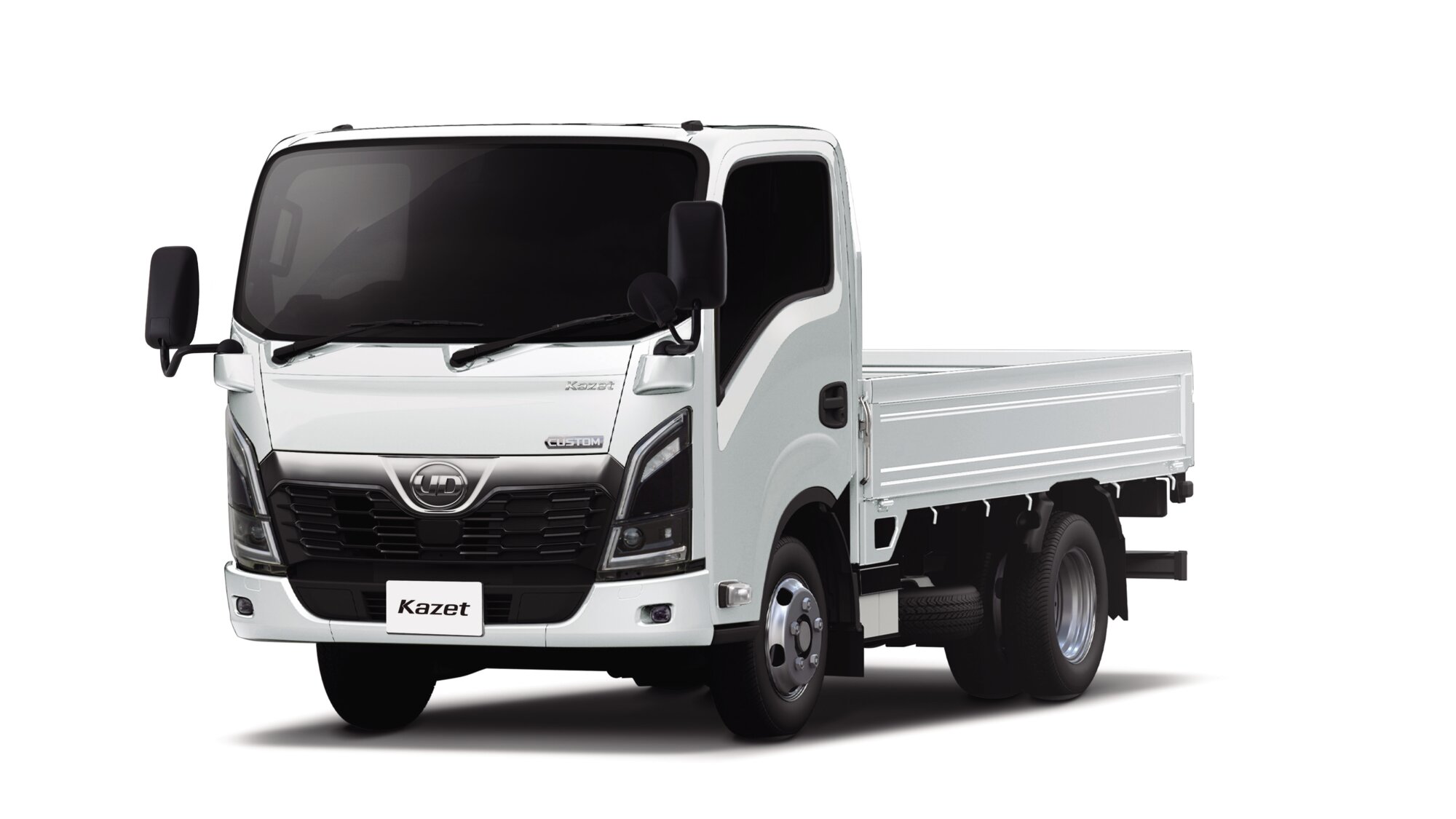Whether you are interested in the logistics industry or exploring new career paths, this article will provide valuable insights.
Truck driver shortage: current state and causes
With increasing global demand for logistics, the truck driver shortage has become a pressing issue. The underlying causes vary by country, and numerous countermeasures are being taken.
Situation and background in Japan
Japan’s logistics industry faces unique structural challenges. In particular 2024 marks a turning point due to the Japanese government’s workstyle reform legislation. From April 1, 2024, the maximum annual overtime limit for truck drivers has been restricted to 960 hours, forcing improvements in employment conditions and workforce retention.
Two major factors accelerating the driver shortage are the aging workforce and the declining number of young workers. According to a survey by the Japan Trucking Association, in 2023, 48.8% of truck drivers in Japan were over 50 years old. This indicates a high risk of workforce depletion due to retirements shortly.
Moreover, long working hours and relatively low wages create unfavorable working conditions that discourage younger generations from entering the industry. Addressing these challenges and creating an attractive work environment for young workers is an urgent priority for the logistics sector.
Situation and background overseas
The truck driver shortage is a serious problem in logistics worldwide, particularly in Europe and North America. A 2021 ATA report estimated a shortage of 80,000 truck drivers in the U.S., expected to double by 2030.
A key reason for the shortage is the rapid growth of e-commerce, which has boosted freight demand. Additionally, long working hours and tough labor conditions, coupled with relatively low wages, make recruitment challenging. In Europe and North America, where trucks handle more than half of all freight transport, this issue has significant economic repercussions.

Key causes of the shortage
The truck driver shortage is driven by multiple interrelated factors. Major challenges include tough working conditions, an aging workforce, and rising demand.
The impact of harsh working conditions
The demanding working environment in the trucking industry has significantly contributed to labor shortages. Long driving hours, loading and unloading tasks, and prolonged waiting times increase the workload on drivers.
Furthermore, many drivers feel that their wages are too low for these tough working conditions. The perception of low pay compared to other industries has led to a decline in the overall attractiveness of the profession worldwide.
Aging workforce and its impact
Aging demographics are severely affecting the logistics industry as well. In many countries, the average age of truck drivers is rising, and the retirement of experienced drivers is accelerating, while the influx of younger drivers remains limited.
In particular, younger generations in Western countries are increasingly avoiding trucking careers. If retirements continue to outpace new hires, the labor shortage will further worsen in the coming years.
Declining interest among young workers
The declining interest in trucking careers among younger generations is a global concern. Long working hours and harsh labor conditions have damaged the profession’s image, making it less appealing.
Additionally, fewer people are obtaining driver’s licenses, aggravating the issue. These factors collectively threaten the sustainability of the trucking industry.
Increasing logistics demand
The rapid growth of e-commerce has introduced new challenges to the logistics sector. With the expansion of online shopping, delivery demands have skyrocketed.
However, the supply of truck drivers has not kept pace with the growing demand, leading to a severe imbalance. This situation poses a risk to the sustainable development of the logistics industry.
Stricter licensing regulations
In many countries, licensing regulations are becoming stricter, creating barriers for new drivers entering the industry. In particular, the increasing subdivision of license categories has led to more cases where obtaining a higher-level license is required
For example, the EU’s introduction of the Certificate of Professional Competence (CPC) and the U.S.’s Commercial Driver’s License (CDL) requirements have made it more time-consuming and expensive to enter the profession. These regulatory changes present significant obstacles for aspiring truck drivers.
Impact of truck driver shortage
The global truck driver shortage is delaying deliveries, raising costs, and disrupting supply chains, impacting businesses and the economy.
Delivery delays and supply chain issues
The global shortage of truck drivers is causing significant disruptions to logistics systems. According to a 2022 report by the International Road Transport Union (IRU), Europe is experiencing a shortage of approximately 380,000 drivers, which accounts for about 10% of the total demand. This deficit results in delayed deliveries and complicates inventory management, leading to missed sales opportunities for businesses and reduced convenience for consumers.
Rising logistics costs
The shortage of truck drivers is leading to a rise in logistics costs worldwide. To secure drivers, transport companies are compelled to increase wages, which in turn makes fare hikes unavoidable.
Furthermore, these rising logistics costs put financial pressure on businesses, ultimately forcing them to pass the costs onto product prices. As a result, this situation is contributing to higher consumer prices, affecting society as a whole.
Deterioration of working conditions
The severe labor shortage is rapidly deteriorating working conditions in the field. The lack of manpower places an excessive workload on active drivers, creating a vicious cycle where increasing strain leads to even more resignations.
In Europe, the average age of truck drivers is 47, with one-third of them being 55 or older. Many experienced drivers are expected to retire within the next decade, and with few younger drivers entering the industry, the shortage is likely to become even more critical.
Ripple effects on the overall economy
Disruptions in the logistics system are having a severe impact on the global economy. Delays in transportation and rising costs are particularly affecting small and medium-sized enterprises, reducing their competitiveness and threatening their financial stability.
Additionally, higher product prices and delivery delays are weakening consumer purchasing power, slowing down overall economic activity. This situation poses significant challenges to the long-term sustainability of global supply chains.

Solutions to the truck driver shortage
The global logistics industry is exploring various solutions to address the growing shortage of truck drivers. A comprehensive approach is being taken, ranging from improving working conditions to implementing technological innovations.
Enhancing working conditions
Creating a more supportive working environment is key to addressing the driver shortage. Efforts are being made to review wage structures and ensure that drivers receive fair compensation that reflects their workload.
Additionally, the introduction of appointment scheduling systems is helping to reduce waiting times and shorten working hours. Furthermore, the American Trucking Associations (ATA) has lowered the minimum age requirement for obtaining a commercial driver’s license, encouraging more young people to enter the industry.
Using technology for efficiency
The adoption of advanced technology is enhancing efficiency in logistics operations. Automating loading and unloading processes in warehouses has significantly reduced the physical strain on drivers, making their work more manageable.
Additionally, the promotion of modal shift (transitioning freight transport from trucks to rail and maritime options) is helping to alleviate driver workload while improving overall operational efficiency.
Strengthening education and training
Steps are being taken to help newcomers enter the profession with confidence. Countries around the world are strengthening training programs to develop skilled truck drivers.
In Europe and North America, hands-on training programs, including driving lessons at vocational schools and internships at logistics companies, are being introduced. These efforts play a crucial role in ensuring a sustainable workforce for the industry.
Improving industry image
Countries around the world are working to improve the image of the logistics industry. Social media and online platforms are being actively utilized to promote the appeal of truck driving careers to younger generations.
Additionally, the introduction of flexible work arrangements and comprehensive benefits packages is helping to improve the industry's overall image by presenting new and attractive ways to work.
Advancing autonomous driving technology
Autonomous driving technology is seen as a promising solution to the driver shortage. Across the world, pilot programs are being conducted to achieve Level 4 autonomous trucks, yielding steady progress.
Additionally, the adoption of telematics (an advanced transport management system utilizing communication technology) is enhancing transportation efficiency while reducing dependence on human labor.

UD Trucks' commitment to autonomous driving technology
In response to the global truck driver shortage, UD Trucks is pioneering innovative solutions to address this critical industry challenge. A key initiative is developing autonomous driving technology together with Isuzu Motors and other Japanese commercial vehicle manufacturers.
Starting in November 2024, UD Trucks launched an on-road Level 4 autonomous driving pilot test using heavy-duty trucks on the Shin-Tomei Expressway in Japan. This trial integrates advanced sensors, including high-precision GNSS (Global Navigation Satellite System) and LiDAR (Light Detection and Ranging), enabling accurate positioning and comprehensive environmental awareness.
Furthermore, the company is conducting extensive evaluations on automated departure and arrival systems at service areas, as well as emergency braking functions to enhance safety and reliability. These initiatives are expected to make a significant contribution to resolving pressing challenges in the global logistics industry.
Solving the truck driver shortage and our role
The global logistics industry is actively working to address the driver shortage from multiple angles. A comprehensive approach is being taken, including improvements in working conditions, enhancements in education and training systems, and the adoption of advanced technologies.
UD Trucks is helping to tackle this challenge by putting autonomous driving technology into practice. We are using innovative technology to help improve logistics and create a more sustainable transportation industry.


















